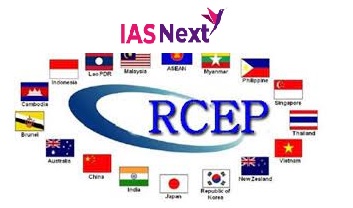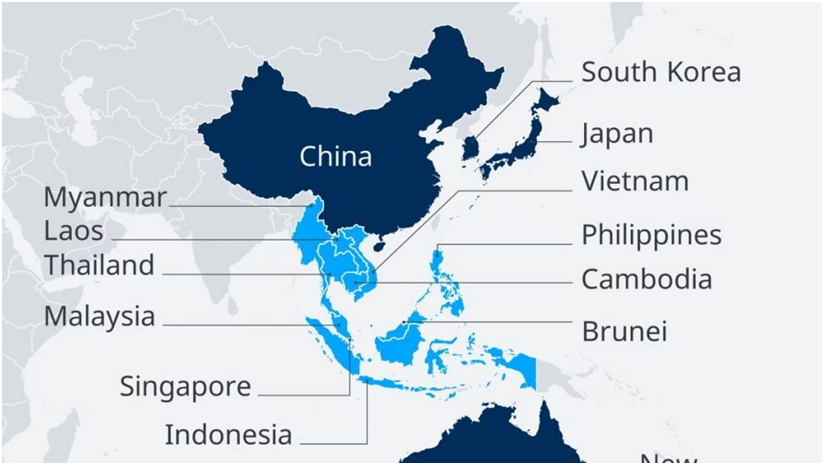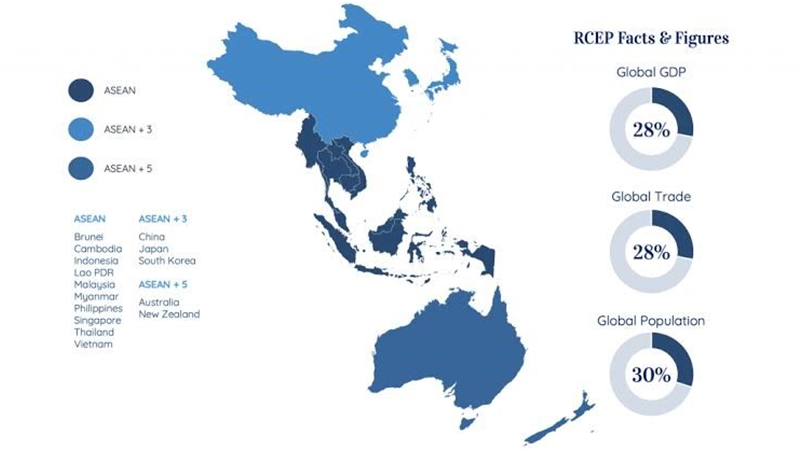CURRENT AFFAIRS
Get the most updated and recent current affair content on Padhaikaro.com
Regional Comprehensive Economic Partnership (RCEP)
- IAS NEXT, Lucknow
- 03, Jan 2022

Reference News:
The RCEP will come into effect on January 1, 2022, marking the formation of the world’s largest free trade zone in terms of trade volume.
What is RCEP?
It is a trade deal between the 10-member Association of Southeast Asian Nations (ASEAN) and China, Japan, South Korea, Australia and New Zealand.
Aims and Objectives of RCEP:
- To lower tariffs, open up trade in services and promote investment to help emerging economies catch up with the rest of the world.
- To help reduce costs and time for companies by allowing them to export a product anywhere within the bloc without meeting separate requirements for each country.
- It also touches on intellectual property, but will not cover environmental protections and labour rights.
Significance:
- RCEP will cover about 30% of global gross domestic product (GDP), worth $26.2 trillion (€23.17 trillion), and nearly a third of the world’s population, some 2.2 billion people.
- Under RCEP, around 90% of trade tariffs within the bloc will eventually be eliminated.
- RCEP will also set common rules around trade, intellectual property, e-commerce and competition.

Why did India not join?
India withdrew from the RCEP largely because of concerns it would open it up to Chinese goods amid an already wide trade imbalance with China, and the failure of the agreement to adequately open up to services.
Need for India’s presence in RCEP:
- India had “a crucial role” to play in helping the region build an inclusive architecture at a time of increasing global instability.
- Such trade pacts will also give Indian companies a platform to showcase their strengths across even larger markets.
- Besides, Rising U.S.-China tensions were “deeply worrying” for the region with the pandemic resulting in “heightened tension”

Challenges ahead:
- The lack of participation by the United States “allows Beijing to solidify its role as driver of economic growth in the region.”
- Economic gains will take a long time to materialize.
- While the big Asian economies will enjoy most of the spoils, RCEP may leave smaller countries within ASEAN at a disadvantage, as the trade deal doesn’t cover their major industries.
- The least developed countries in Asia ― Cambodia, Laos, Myanmar ― currently benefit from inter-ASEAN trade, which could be “eroded” by RCEP trade.
- The smaller ASEAN countries may also lose some of their benefits from trade preference programs that allow them to export tariff-free products outside of ASEAN, including South Korea and Japan.